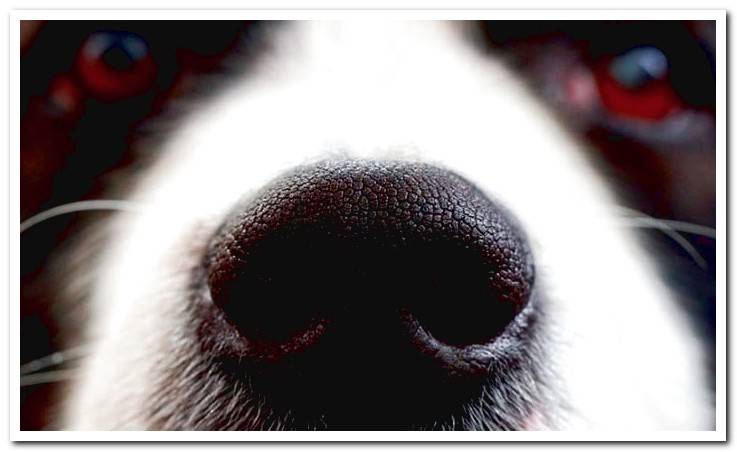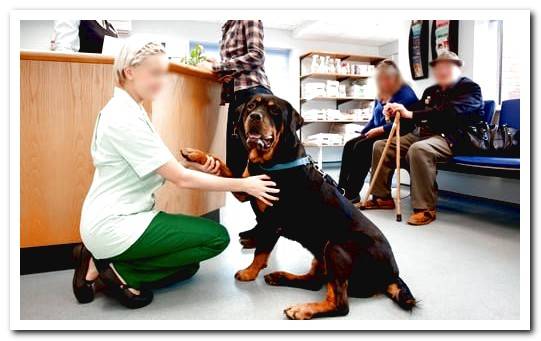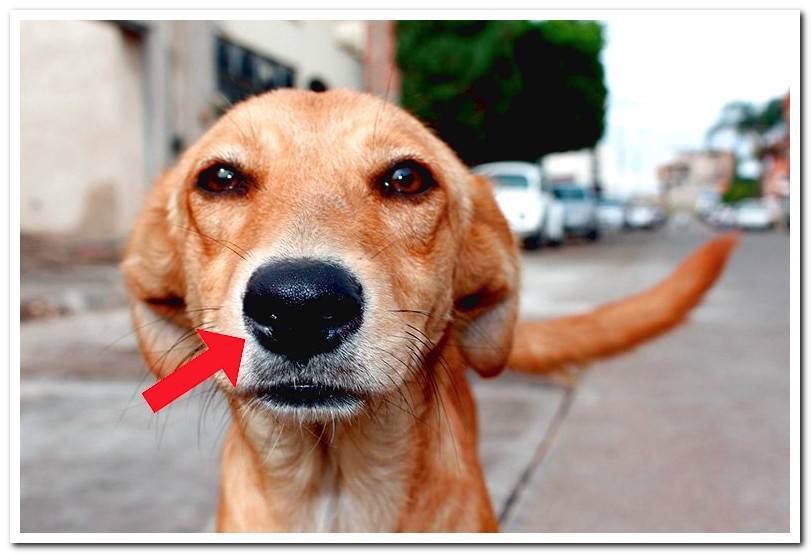
Although a slight mucus in our dog’s nose may not be alarming, if it persists or if we detect any other symptoms, it is necessary to consult a veterinaryn.
Next we are going to review the most common causes that can explain that our dog has snot. Although we associate mucus with a cold, we will see other diseases that are characterized by a runny nose.
- You may also be interested in: Symptoms of Influenza in Dogs
Index of contents
- 1 Runny nose in the dog
- 2 Why should we go to the vet if our dog has snot?
- 3 Canine atopia
- 4 Presence of foreign bodies
- 5 Rhinitis and sinusitis
- 6 Oronasal fistulas
- 7 Tumors and polyps in the nose
- 8 Runny nose and nerves
Runny nose in the dog
The appearance of mucus is due to the presence of any element in the nostrils capable of causing irritation. In addition, a dog with snot usually has sneezes, as these are also due to nasal irritation.
Sometimes, specimens with a runny nose also feel nauseous due to what is known as postnasal drip, so that mucus ends up in the throat, causing retching. Next we will explain different causes of nasal mucus.
Why should we go to the vet if our dog has snot?
Although a runny nose may seem like a minor disorder, especially if it is watery and the animal does not show serious symptoms, the truth is that there is risk of complications.
A foreign body, a tumor or infections such as those caused by bacteria or fungi can damage the nasal mucosa. In these cases the picture is aggravated with the appearance of hemorrhages of greater or lesser severity. Also, it could be complicated with rhinitis and sinusitis.

Canine atopia
A runny, clear nasal discharge, sneezing, and rubbing the face with paws or against objects are typical signs of this condition. Scratching ends up damaging the skin.
Is due to an allergic reaction Although it may only be seasonal at first, it ends up being presented throughout the year. It is complex to determine what is causing the allergic reaction. The treatment would be to avoid this allergen but it is not always possible. That is why the control of the clinical picture is sought.
Presence of foreign bodies
When a foreign body is introduced into the nose, it is usual for the secretion to be emitted only through the hole where it lodges. The most common objects found in dogs’ noses are seeds, spikes, or chips.
It is common for the dog to sneeze, in an attempt to eliminate them, which can even lead to bleeding. If the foreign body does not come out soon, a unilateral thick secretion ends up being produced.
- How do I know if my dog has a spike on its nose?
Sometimes they can be viewed and removed carefully with tweezers but generally they will be at a considerable depth and must be removed by the vet, usually after administering anesthesia. Then antibiotics are often prescribed to prevent bacterial infections.
Rhinitis and sinusitis
The nasal cavity extends inward through the frontal and maxillary sinuses. Thus, any nasal infection can also affect these areas. Rhinitis would be the infection of the nasal cavity, while it is called sinusitis when it also affects the sinuses.
There are different causes, such as an allergy or the presence of viruses such as herpesvirus, adenovirus or parainfluenza, which will generate a clear, watery runny nose. Instead, if there are bacteria or fungi involved, the mucus will be thick and foul-smelling.
Sneezing and retching are also present. Distemper, tumors, or dental infections are other causes of rhinitis and sinusitis. Veterinary treatment based on the trigger is essential. Chronic cases will be difficult to resolve and may even require surgery.

Oronasal fistulas
In this case, the nasal discharge would occur only in one of the holes. There may be sneezing that increases after eating. When a fistula occurs, the food and water the dog ingests come out through the nose. There are dogs that are born with this problem due to a fractured palate.
It most often happens due to an infection in a tooth located in the upper jaw. If an accumulation of pus occurs, it can open into the nasal cavity. The tooth falls out and leaves a hole that allows the passage from the mouth to the nose. It is solved with surgery.
Tumors and polyps in the nose
If our dog suffers from any tumor or polyp located in the nasal region, the discharge will be eliminated through the hole where it is located. There may also be bleeding. These growths hinder the passage of air.
Polyps can be removed, although they are likely to come back. The older dogs are the most likely that these malignancies are tumors, malignant in a high percentage. The benign ones can be removed and the malignant ones can be treated, although the prognosis will be reserved.
Runny nose and nerves
Finally, in some dogs we will be able to appreciate a watery nasal discharge, like water, that appears when they are very nervous. It has no clinical relevance, there are no other signs and it remits spontaneously as soon as the dog relaxes.
